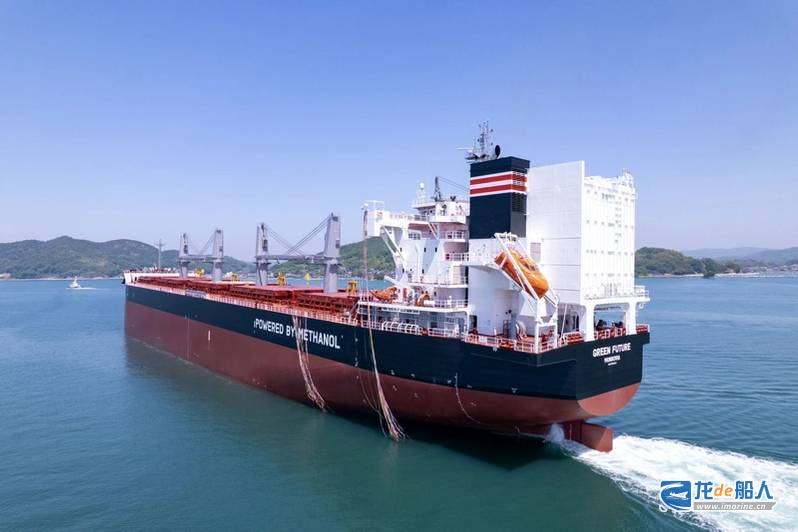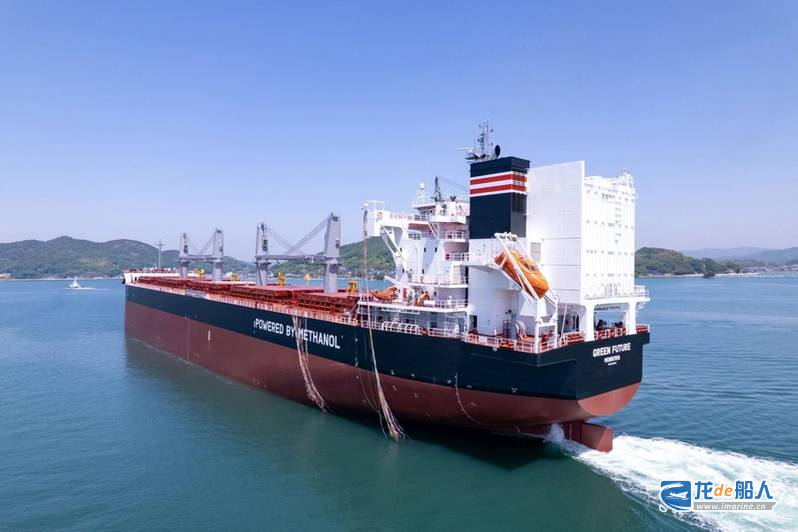From 2022 to 2024, Chinese shipyards will account for 32.4%, 62.6%, and 71.2% of the tanker market, respectively, showing an upward trend. The share of container ship orders will also show a similar upward trend. China has consistently ranked first in global new ship orders since 2012.
Niels Rasmussen, chief shipping analyst at the Baltic and International Maritime Council (BIMCO), said that in the past five years, 50% of the world’s total ship capacity has been delivered by Chinese shipyards, and the current capacity in the orderbook has reached 66%. “It is particularly noteworthy that Chinese shipyards have begun to undertake and build a variety of ‘high-end’ ship types that were previously dominated by South Korean shipyards, such as LNG carriers and ultra-large container ships.”

For example, in November 2024, Jiangnan Shipyard, a subsidiary of China State Shipbuilding Corporation (CSSC), delivered the 175,000-cubic-meter (m3) Mark III Flex membrane LNG carrier, the Al Shelila, to ADNOC L&S, a subsidiary of the Abu Dhabi National Oil Company (ADNOC). The two parties subsequently signed contracts in 2022 for the construction of six 175,000-m3 LNG carriers. This order marked the first domestic contract for a MARK III membrane-type large LNG carrier and the first large LNG carrier order from a leading international oil and gas company. It also marked the first direct collaboration between a Chinese shipbuilder and an international oil and gas company in the construction of large LNG carriers.
With the delivery of the first ship in the series, the AL SHELILA, Jiangnan Shipyard achieved a breakthrough in the delivery of large LNG carriers, becoming the second shipbuilder in China after Hudong-Zhonghua Shipbuilding to successfully deliver large LNG carriers.
Niels Rasmussen pointed out that container ships and LNG carriers account for approximately 45% of the total delivery capacity for orders over the next five years, but only approximately 25% of the delivery capacity over the past five years. Currently, the focus of the new shipbuilding market has clearly shifted to ultra-large container ships—the average size of container ships delivered over the next five years will be 80% to 85% larger than the ship types delivered over the past five years.
Chinese shipbuilders are seeking to maintain their leading position in the growing market for new energy and clean technology ships and are building domestic capacity in engine and equipment design companies. For example, Silverstream Technologies is a founding member of the Global Sustainable Transport Innovation Alliance (GSTIA), an alliance launched by China’s Ministry of Transport to accelerate green industrial projects within China.
Andrew Starforth, General Manager of Silverstream Technologies China, said that as of January 2025, the total number of ships (5,000 deadweight tons or more) equipped with energy-saving technology built or ordered by Asian shipyards exceeded 10,000, an increase of about 10% compared to January 2024. Currently, Silverstream has established partnerships with 20 shipbuilders around the world, including 16 shipyards in China, South Korea, and Singapore.
Starforth pointed out that Clarkson data shows that about one-third of the fleet currently under construction at Asian shipyards is equipped with some form of emission reduction technology. Silverstream statistics show that 42% of ships ordered from Asian shipyards are equipped with energy-saving technology or have already ordered energy-saving technology.
Over the past four years, South Korean shipyards have seen their share of global shipbuilding orders decline steadily. The South Korean government has announced a ten-year investment plan aimed at helping companies develop smart and clean energy technologies for the shipbuilding industry. The plan, called “K-Shipbuilding Hyper-Gap Vision 2040,” aims to enhance South Korea’s technological capabilities in LNG, ammonia, and hydrogen-powered engines.
Meanwhile, South Korea is actively addressing energy efficiency challenges with its LNG carriers. Korean Register (KR) has signed a memorandum of understanding with Samsung Heavy Industries to jointly develop a 174,000 m3 LNG carrier equipped with three cargo tanks. Reducing the number of cargo tanks is expected to reduce ship weight, thereby improving fuel efficiency, lowering the natural evaporation rate of LNG, and ultimately reducing operating costs. This design also means fewer pumping systems onboard, simplifying maintenance and reducing long-term operating costs.
The KR has also signed an agreement with Hanwha Ocean to collaborate on the development of LNG carriers equipped with fore deckhouses. The optimized hull is expected to reduce wind resistance and improve fuel efficiency, while providing more space for the installation of energy-saving equipment such as wind-assisted propulsion systems.
In addition to focusing on its domestic shipbuilding industry, South Korea is actively expanding into the US market. Hanwha Group acquired the Philly Shipyard in late 2024 and renamed it Hanwha Philly Shipyard, and is currently pursuing the acquisition of Australian defense shipbuilding group Austal. HD Hyundai has established a technical cooperation relationship with Huntington Ingalls Industries (HII), the largest defense shipbuilding company in the United States, and signed a strategic shipbuilding cooperation agreement with Edison Chouest Offshore in the United States.

As one of the three largest shipbuilding countries in Asia, Japan is seeking to deepen cooperation with the United States through the Japan-U.S. Shipbuilding Promotion Fund, focusing on areas such as car carriers, LNG carriers and icebreaking warships.
Due to the rise of the Chinese and South Korean shipbuilding industries, Japanese shipyards have seen a significant decline in construction volume and orders. Data from shipbroker BRS shows that Japan accounts for about a quarter of the bulk carrier market’s outstanding orders, with Chinese shipyards occupying the remaining share and expanding their market share. In addition, the technological advantages that the Japanese shipbuilding industry once prided itself on are being caught up by China and South Korea.
Therefore, Japan is promoting the revival of its shipbuilding industry and plans to double its shipbuilding capacity by 2030. The Nikkei recently reported that the Japanese government is considering establishing a national shipyard operated by private companies.
Meanwhile, Japanese shipbuilders are consolidating to enhance their competitiveness. Tsuneishi Shipbuilding acquired Mitsui E&S, and Imabari Shipbuilding, Japan’s largest shipbuilding group, acquired Japan Marine United (JMU), Japan’s second-largest, to further consolidate its operations. Kawasaki Heavy Industries, Imabari Shipbuilding, and JMU are jointly planning to build liquefied hydrogen carriers, aiming to consolidate facilities and human resources. This collaboration follows Kawasaki Heavy Industries’ design and construction of the first commercial carrier.
Some Asian shipyards are acquiring shipyards in Vietnam and the Philippines to increase capacity and reduce costs. By 2024, Philippine shipyards, driven by Tsuneishi Heavy Industries Cebu, will have surpassed Vietnam in terms of order volume. However, Vietnam’s shipbuilding industry has grown tenfold over the past decade and is expected to continue growing.
However, as BRS stated in its 2025 Annual Review, “China has built an outstanding shipbuilding system, encompassing well-equipped shipyards, a large base of marine equipment manufacturers, and a stable banking system staffed with professionals familiar with the shipbuilding business. China’s success in the shipbuilding industry no longer relies solely on low-cost labor. Meanwhile, the group of Chinese shipowners has gradually grown and is capable of placing a large number of orders with domestic shipyards—a competitive edge that Japanese shipyards also possess, but Korean shipyards lack.”
BIMCO data shows that Chinese shipyards may face challenges. In the first half of 2025, the market share of Chinese shipyards fell from 72% to 52%, mainly due to growing concerns about the impact of port fees imposed by the US Trade Representative (USTR) on Chinese ships.


